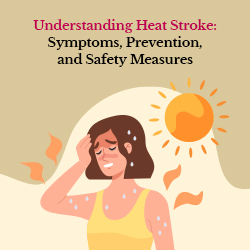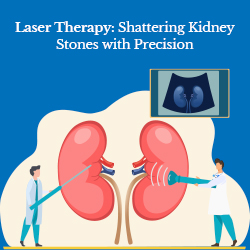Dr. Anitha V
Consultant Internal Medicines
We’re all starting to feel the heat in Bengaluru! The days are getting sunnier and warmer as the chilliness of early spring fades away.
As temperatures soar, it’s imperative to be acutely aware of the perils associated with heat strokes.
With the arrival of summer, the likelihood of heat-related illnesses, including the formidable heat stroke, escalates substantially. Understanding what heat stroke entails, identifying its warning signals, and embracing preventive actions are pivotal for safeguarding one’s well-being during sweltering conditions.
What is Heat Stroke?
Heat stroke is a severe heat-related malady characterized by the body’s incapacity to regulate its temperature amidst soaring external heat levels. Extended exposure to extreme heat, particularly devoid of adequate hydration or refuge in cool environments, can impede the body’s innate cooling mechanisms, such as sweating. Consequently, the body’s core temperature may skyrocket precipitously, surpassing 103 degrees Fahrenheit, and potentially culminating in life-threatening complications.
Recognizing Warning Signs
Anticipating and discerning the telltale signs of heat stroke can be pivotal for preserving lives. Some indicators include:
- Lack of Sweating: During a heat stroke, the body’s innate ability to sweat and dissipate heat falters. The cessation of perspiration despite scorching temperatures may serve as a crucial red flag for impending heat stroke.
- Hot, Dry Skin: Skin that feels excessively warm to the touch and exhibits parchedness and a flushed appearance could signify overheating and an inability to regulate temperature effectively.
- Severe Nausea: Persistent bouts of nausea or vomiting, especially when coupled with exposure to elevated temperatures, could signify the onset of heat stroke and warrant immediate attention.
- Confusion and Disorientation: Heat stroke can inflict cognitive impairment, inducing confusion, disorientation, and impaired concentration, necessitating prompt intervention.
- Headache, Giddiness, Weakness: Individuals besieged by heat stroke may endure debilitating headaches, dizziness, weakness, or feelings of lightheadedness, signaling the severity of the condition.
Preventive Measures
Preventing the onset of heat stroke entails taking timely, proactive measures to mitigating the risk of overheating and dehydration. Here’s a list of effective strategies to navigate hot weather safely:
- Dress Appropriately: Wear loose-fitting, lightweight attire crafted from breathable fabrics like cotton to facilitate optimal air circulation and heat dissipation, thereby ameliorating the likelihood of overheating.
- Limit Sun Exposure: Curtailing outdoor activities during the sweltering highs of the day, typically spanning from 10 a.m. to 4 p.m. Seek refuge in shaded areas or deploy sun protection with simple items such as umbrellas, hats, and sunglasses.
- Stay Hydrated: Prioritize hydration by imbuing your system with frequent intake of fluids throughout the day, irrespective of whether thirst is apparent. While water reigns supreme as the quintessential hydrating elixir, electrolyte-infused beverages can also prove instrumental in replenishing lost minerals precipitated by profuse sweating.
Conclusion
As temperatures climb and we approach the hot summer months, the imperative of prioritizing heat stroke awareness and prevention cannot be overstated. By acquainting oneself with the warning signs of heat stroke, proactively embracing measures to sustain coolness and hydration, and attentively heeding the body’s cues, the threat of heat-related afflictions can be mitigated, ensuring a safe and happy summer ahead.



